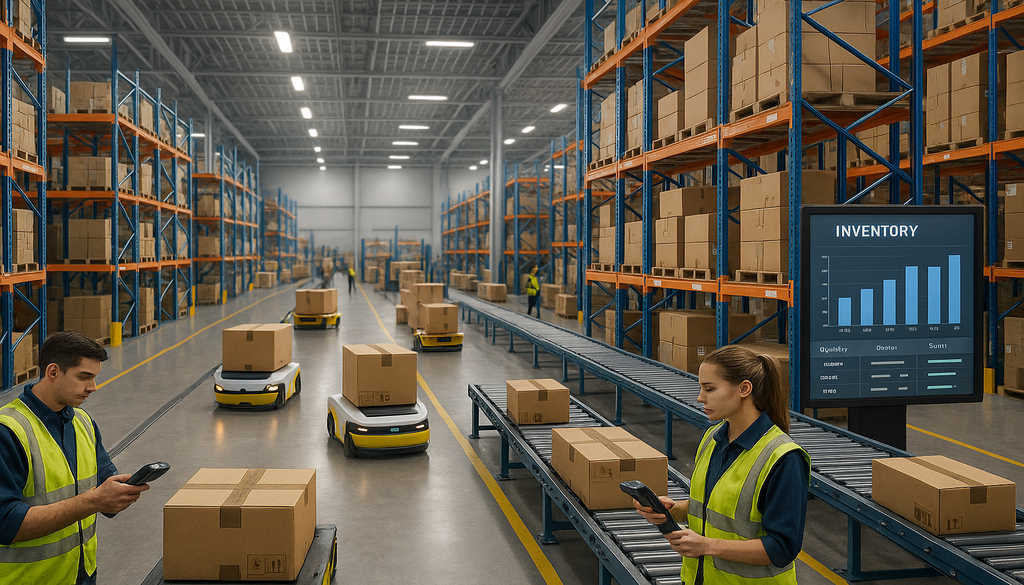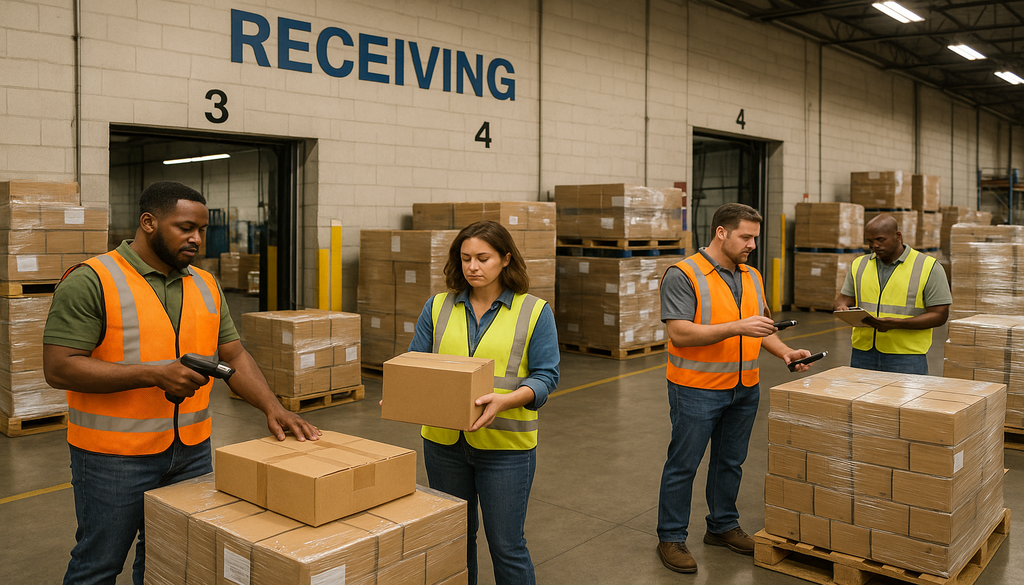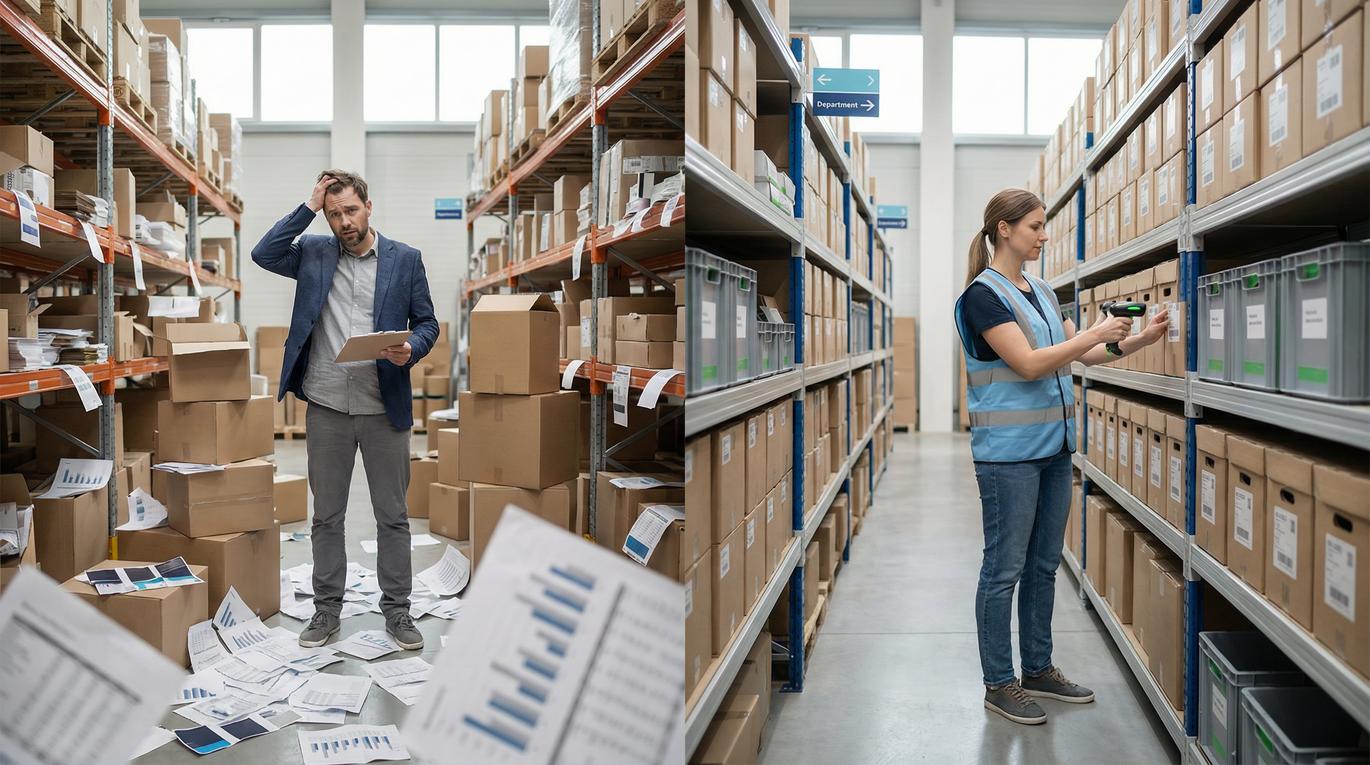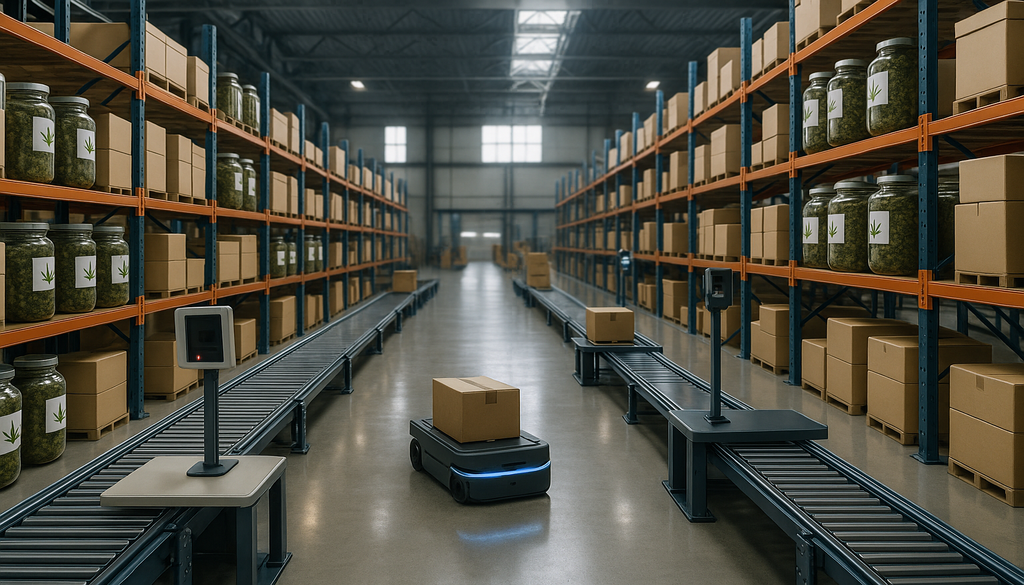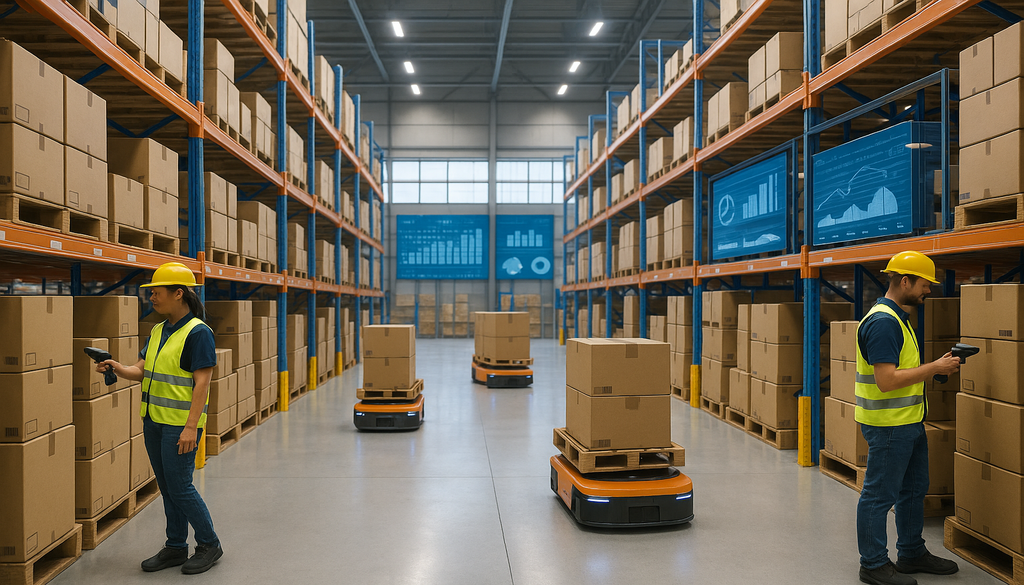The modern logistics landscape demands exceptional warehouse management practices, especially within third-party logistics (3PL) operations. As businesses increasingly outsource their logistics functions, understanding the critical warehouse operations that power these services becomes essential for supply chain professionals. From receiving and processing inventory to managing returns and offering value-added services, 3PL warehouses serve as the backbone of efficient supply chains worldwide. This comprehensive guide explores the fundamental warehouse functions within 3PL logistics, providing insights into how these operations contribute to streamlined processes, cost efficiencies, and enhanced customer satisfaction.
Overview of 3PL Providers and Their Warehouse Functions
Third-party logistics (3PL) providers are specialized companies that offer outsourced logistics services to businesses seeking expertise in transportation, warehousing, and distribution. These providers have become indispensable partners for organizations looking to optimize their supply chain operations without maintaining extensive in-house logistics infrastructure. The 3PL market continues to grow significantly, with recent industry reports indicating that over 90% of Fortune 500 companies use 3PL services to handle some portion of their logistics operations. This tremendous growth reflects the increasing complexity of global supply chains and the specialized knowledge required to navigate them efficiently.
Within the 3PL ecosystem, warehousing functions serve as critical operational components that directly impact service quality and customer satisfaction. The primary warehouse functions performed by 3PL providers include inventory management, storage optimization, order fulfillment, picking and packing, and distribution coordination. These core operations are typically enhanced by sophisticated warehouse management systems (WMS) that provide real-time visibility and control over inventory movements. Many leading 3PL providers have invested heavily in automation technologies that further streamline these warehouse functions, with automated storage and retrieval systems (AS/RS) becoming increasingly common in modern facilities.
The integration of warehouse functions with broader logistics services represents a key advantage of working with 3PL providers. Rather than operating as isolated facilities, 3PL warehouses function as strategic nodes within comprehensive logistics networks. This integration enables seamless coordination between warehousing operations and transportation services, creating efficiencies that would be difficult to achieve with disconnected systems. For example, when inbound shipments arrive at a 3PL warehouse, the receiving process automatically triggers inventory updates and outbound transportation planning. The connected nature of these systems allows for optimization across the entire supply chain rather than siloed improvements that may not deliver end-to-end benefits.
The Process of Goods Receiving in 3PL Warehouses
The goods receiving process represents the critical first step in warehouse operations and establishes the foundation for all subsequent activities within a 3PL facility. This process typically begins with advance shipment notifications (ASNs) that provide detailed information about incoming deliveries, including product types, quantities, and expected arrival times. Upon physical arrival at the warehouse, shipments undergo thorough verification procedures that include checking items against purchase orders, inspecting for damage, and confirming quantities. These verification steps are crucial for maintaining inventory accuracy and preventing discrepancies that could cascade throughout the supply chain, potentially causing stockouts, overstock situations, or incorrect order fulfillment.
Several challenges commonly arise during the goods receiving process that 3PL providers must address to maintain operational efficiency. These include handling unexpected deliveries without proper documentation, managing deliveries that arrive outside scheduled appointment windows, and processing items with missing or damaged barcodes. To overcome these challenges, leading 3PL warehouses implement robust receiving protocols that include clear communication channels with suppliers, flexible staffing models to accommodate variable workloads, and contingency procedures for handling exceptions. Additionally, many facilities leverage receiving technologies such as mobile scanning devices, automated conveyor systems, and computer vision for rapid and accurate product identification and processing.
The impact of effective receiving processes extends far beyond the receiving dock, influencing overall warehouse performance and customer satisfaction. When goods are received accurately and efficiently, subsequent warehouse operations benefit from reliable inventory data, proper product placement, and timely availability for order fulfillment. Research from the Warehouse Education and Research Council indicates that warehouses with optimized receiving processes experience 25% fewer inventory discrepancies and 30% faster order processing times compared to facilities with suboptimal receiving operations. These improvements directly translate to enhanced customer satisfaction, as orders can be fulfilled more accurately and with shorter lead times. Furthermore, efficient receiving processes reduce labor costs by minimizing the time spent resolving discrepancies and searching for misplaced inventory.
Managing Returns and Handling Challenges in 3PL Logistics
In today’s e-commerce-driven retail landscape, returns management has evolved from a peripheral concern to a central component of logistics strategy. For 3PL providers, developing efficient returns handling capabilities has become essential for maintaining competitive advantage and supporting their clients’ customer service objectives. Studies indicate that the average return rate for online purchases ranges from 20% to 30%, significantly higher than the 8-10% typically seen in brick-and-mortar retail. This high volume of returns presents substantial operational challenges for 3PL warehouses, requiring dedicated space, specialized procedures, and trained personnel to process returned items efficiently. Forward-thinking 3PL providers recognize that excellence in returns management directly impacts their clients’ customer satisfaction metrics and retention rates.
Implementing effective returns management strategies requires a systematic approach that balances operational efficiency with customer service considerations. Leading 3PL providers have established centralized returns processing centers equipped with specialized inspection stations, testing equipment, and refurbishing capabilities. These facilities employ standardized workflows that guide returned items through a series of decision points to determine appropriate disposition paths, such as restocking, refurbishment, liquidation, or recycling. Technology plays a crucial role in optimizing these processes, with advanced returns management systems providing capabilities such as automated return authorization, barcode scanning for quick product identification, and algorithmic disposition recommendations based on product condition, value, and restocking costs. The most sophisticated 3PL providers have also implemented data analytics programs that identify returns patterns and root causes, enabling their clients to address product quality issues or improve product descriptions to reduce future returns.
Several technologies have transformed returns processing within 3PL operations, significantly reducing processing times and improving accuracy. Mobile scanning devices equipped with returns-specific applications allow warehouse associates to quickly capture product information, document condition issues with photos, and access disposition guidelines. Automated sortation systems route returned items to appropriate processing stations based on product category or required handling procedures. Additionally, some leading 3PL providers have implemented artificial intelligence and machine learning systems that can predict the resale value of returned items and recommend optimal disposition paths. These technological innovations enable 3PL warehouses to process returns more quickly and make more profitable disposition decisions, creating value for both the 3PL provider and their clients.
Adapting to Demand Spikes in Warehouse Operations
Demand spikes represent one of the most significant operational challenges for 3PL warehouses, requiring rapid adjustments to staffing, space utilization, and process flows. These periodic surges in activity can be triggered by various factors, including seasonal shopping patterns, promotional events, product launches, or unexpected market shifts. The impact of these demand spikes extends throughout warehouse operations, potentially creating bottlenecks in receiving, picking, packing, and shipping processes if not properly managed. For 3PL providers, the ability to scale operations quickly while maintaining service levels during peak periods has become a crucial competitive differentiator. Industry data suggests that many warehouses experience volume fluctuations of 30% or more between peak and non-peak periods, highlighting the magnitude of this challenge.
Successful 3PL warehouses employ multiple strategies to efficiently manage demand spikes without compromising service quality. Cross-training programs ensure that staff members can perform various warehouse functions, providing operational flexibility when specific areas experience increased workloads. Temporary staffing arrangements with qualified personnel agencies allow for rapid workforce expansion during peak periods without the long-term costs of permanent hires. Space optimization techniques, such as dynamic slotting and flexible storage configurations, enable warehouses to accommodate varying inventory levels throughout the year. Additionally, many 3PL providers implement modular process designs that can be scaled up or down based on current demand, ensuring that operational efficiency is maintained regardless of volume fluctuations.
Several notable examples demonstrate successful demand spike management within the 3PL industry. A major consumer goods 3PL implemented a “flex team” model that maintains a core group of full-time employees supplemented by trained temporary workers who can be rapidly deployed during peak periods. This approach allowed them to handle a 240% volume increase during holiday seasons while maintaining 99.8% order accuracy. Another innovative 3PL provider developed a predictive analytics platform that forecasts demand spikes with 85% accuracy up to 45 days in advance, enabling proactive staffing and inventory adjustments. These success stories highlight the importance of combining strategic planning, workforce flexibility, and advanced technologies to effectively manage demand variability in warehouse operations.
The Role of Supply Consolidation in Enhancing 3PL Efficiency
Supply consolidation refers to the strategic aggregation of multiple shipments from various sources into larger, more economical loads that optimize transportation and handling resources. In the context of 3PL logistics, consolidation typically occurs at specialized facilities designed to receive, sort, and combine shipments based on destination, delivery timelines, or other relevant criteria. This process transforms what would otherwise be numerous small, inefficient shipments into consolidated loads that maximize vehicle utilization and streamline subsequent distribution operations. The practice has gained significant traction as businesses seek to reduce their logistics costs while simultaneously improving delivery performance and reducing environmental impact. Industry research indicates that effective consolidation programs can reduce transportation costs by 15-30% while decreasing carbon emissions by similar percentages.
The benefits of supply consolidation extend beyond simple cost reduction, creating multi-faceted value for both 3PL providers and their clients. By combining multiple shipments into fewer transportation movements, consolidation significantly reduces freight costs through better utilization of truck capacity and potential qualification for volume-based carrier discounts. The practice also enhances operational efficiency within warehouses by reducing the number of individual shipments that must be processed, documented, and tracked. From an inventory management perspective, consolidation enables more frequent deliveries of smaller quantities from suppliers, reducing on-hand inventory requirements while maintaining product availability. Additionally, consolidated shipping typically results in fewer delivery appointments and receiving transactions at destination facilities, streamlining dock operations and reducing administrative overhead.
Several techniques and tools have proven particularly effective in optimizing supply consolidation within 3PL operations. Advanced transportation management systems (TMS) with load optimization algorithms automatically identify consolidation opportunities based on shipment characteristics, routes, and schedules. Cross-docking facilities designed specifically for rapid consolidation and deconsolidation minimize handling and storage requirements for goods in transit. Collaborative shipping programs that coordinate deliveries from multiple suppliers or to multiple customers further enhance consolidation opportunities beyond what would be possible within a single supply chain. Leading 3PL providers also employ sophisticated data analytics to continuously evaluate and refine consolidation strategies, identifying patterns and opportunities that might otherwise remain hidden. Together, these approaches create a powerful toolkit for maximizing the efficiency gains available through strategic supply consolidation.
Value-Added Services Offered by 3PL Warehouses
The concept of value-added services in 3PL warehousing encompasses specialized activities that go beyond basic storage and distribution functions to enhance product value or customer experience. These services transform 3PL providers from mere storage facilities into strategic partners capable of executing critical supply chain functions that might otherwise require separate vendors or in-house capabilities. Examples include product customization, kitting and assembly, quality inspection, packaging optimization, and regulatory compliance support. The expansion of value-added service offerings reflects the evolving expectations of businesses seeking comprehensive supply chain solutions rather than fragmented services from multiple providers. Industry surveys indicate that over 65% of companies now consider value-added service capabilities a critical factor when selecting 3PL partners, underscoring the strategic importance of these offerings.
Value-added services provide significant competitive advantages for businesses that leverage them effectively within their supply chains. By integrating specialized processing activities into warehouse operations, companies can postpone final product configuration until closer to the point of sale, enabling greater customization without excessive inventory diversification. This approach, known as postponement strategy, allows businesses to maintain leaner inventories while still offering multiple product variations to meet diverse customer needs. Additionally, centralizing value-added services at 3PL facilities eliminates unnecessary transportation between separate processing locations, reducing lead times and logistics costs. The consolidation of these activities also creates opportunities for process standardization and quality control that might be difficult to achieve across multiple locations.
Real-world implementations of value-added services demonstrate their practical impact across various industries. In the electronics sector, a leading 3PL provider performs final configuration of computer systems based on customer specifications, including software installation, peripheral integration, and customized packaging. This arrangement allows the computer manufacturer to offer extensive customization options without maintaining massive finished goods inventories. Within the apparel industry, 3PL warehouses often provide specialized services such as steam pressing, security tag application, and retail-ready packaging that prepare products for immediate display upon delivery to stores. For healthcare manufacturers, 3PL providers with specialized capabilities handle temperature-sensitive storage, lot tracking, and regulatory documentation services that ensure compliance with strict industry requirements. These examples illustrate how value-added services have evolved from occasional conveniences to integral components of sophisticated supply chain strategies.
Conclusion
The warehouse functions within 3PL logistics represent critical components of modern supply chain operations, delivering value that extends far beyond simple storage. From the moment goods arrive at receiving docks to the final stages of value-added processing and outbound shipping, each warehouse function contributes to overall logistics performance and customer satisfaction. Understanding these functions and their interconnections enables businesses to leverage 3PL partnerships more effectively, addressing operational challenges while capitalizing on opportunities for efficiency and service enhancement. As supply chains continue to evolve in response to changing market demands and technological advancements, the strategic importance of optimized warehouse functions will only increase.
The most successful organizations recognize that 3PL warehouse operations are not merely cost centers but strategic assets that can drive competitive advantage. By selecting 3PL partners with robust capabilities across all warehouse functions—from efficient goods receiving to sophisticated returns management and value-added services—businesses can build supply chains that respond nimbly to demand fluctuations while delivering consistent customer experiences. As you evaluate your current logistics strategies or consider new 3PL partnerships, focus on how each warehouse function aligns with your broader business objectives and customer service goals. With this comprehensive understanding, you’ll be well-positioned to make informed decisions that enhance your supply chain resilience and responsiveness in an increasingly complex business environment.
Frequently Asked Questions (FAQ)
Q1: What are the most critical challenges faced by 3PL providers in warehouse management?
A1: The primary challenges include managing inventory accuracy, handling returns efficiently, adapting to fluctuating demand, and integrating advanced technologies for streamlined operations. Inventory accuracy remains particularly challenging as 3PLs often manage thousands of SKUs across multiple clients with different tracking requirements. Labor management presents another significant challenge, especially during seasonal peaks when warehouses must rapidly scale their workforce while maintaining operational excellence. Additionally, technology integration challenges arise when 3PLs need to connect their systems with various client platforms, carrier networks, and marketplace channels. Finally, space utilization becomes increasingly critical as real estate costs rise and available industrial space becomes more limited in key logistics hubs.
Q2: How can 3PL warehouses improve their goods receiving processes?
A2: Improvements can be made through better technology integration, staff training, and implementing standardized procedures to enhance accuracy and speed. Implementing dock scheduling systems can optimize inbound traffic flow and labor allocation. Cross-docking capabilities allow appropriate shipments to bypass storage areas, reducing handling and accelerating throughput. Investing in mobile receiving technologies enables staff to process receipts directly at the unloading point rather than at fixed workstations. Establishing clear vendor compliance programs with specific labeling and documentation requirements ensures that incoming shipments arrive ready for efficient processing. Finally, implementing quality control sampling protocols during receiving helps identify potential issues before products enter inventory, preventing downstream problems.
Q3: What strategies can be used to handle demand spikes effectively?
A3: Key strategies include scalable staffing solutions, predictive analytics for better forecasting, and flexible storage solutions to accommodate varying inventory levels. Developing robust workforce management programs that combine full-time employees with qualified temporary staff provides necessary flexibility during peak periods. Implementing zone-based picking strategies that can be easily adjusted based on volume allows for operational scalability. Utilizing automation selectively for repetitive tasks helps maintain throughput during high-volume periods without requiring proportional staffing increases. Establishing overflow arrangements with complementary facilities provides additional capacity when needed. Perhaps most importantly, maintaining open communication channels with clients regarding upcoming promotions or sales events enables proactive planning rather than reactive responses to sudden volume increases.
Q4: Can you explain how value-added services contribute to customer satisfaction?
A4: Value-added services such as custom packaging, product assembly, and quality inspections enhance product delivery, leading to higher customer satisfaction and loyalty. These services eliminate the need for customers to work with multiple vendors, creating a more streamlined experience with single-point accountability. Personalization services like custom labeling, gift wrapping, or product bundling create distinctive unboxing experiences that strengthen brand connections. Quality control services such as product testing, inspection, and certification ensure that customers receive only products meeting specific standards. Specialized packaging services protect items during transit while potentially reducing dimensional weight charges. Additionally, many value-added services accelerate order-to-delivery cycles by eliminating extra handling steps that would otherwise occur after products leave the warehouse.
Q5: What are the benefits of supply consolidation in 3PL logistics?
A5: Supply consolidation helps in reducing transportation costs, minimizing delays, and improving inventory management, thereby enhancing overall supply chain efficiency. By combining multiple small shipments into fewer, larger loads, consolidation typically reduces freight costs by 15-30% through better utilization of vehicle capacity. The practice also decreases handling requirements at destination facilities, streamlining receiving operations and reducing labor costs. Environmentally, consolidation reduces the total number of transportation movements, leading to significant carbon footprint reductions—often 20-40% compared to unconsolidated shipping methods. From a service perspective, consolidated shipping often provides more predictable delivery schedules and reduced transit damage due to fewer handling points. Additionally, strategic consolidation can enable more frequent deliveries without proportional cost increases, supporting leaner inventory models while maintaining product availability.


